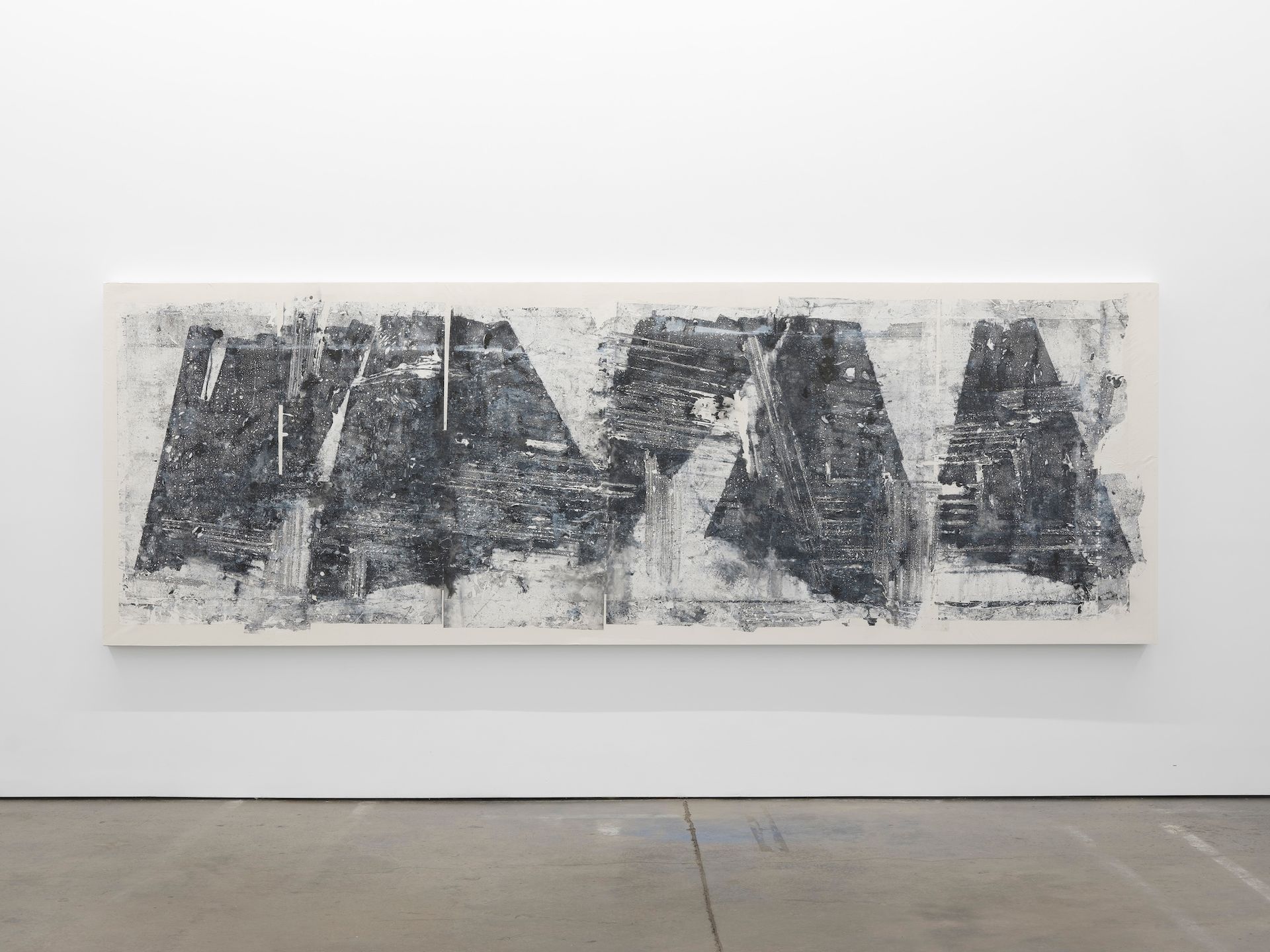San Francisco holds a strange place in the American imaginary. As far as I know, it’s never proclaimed great artistic centrality or wrestled with the naked ambition of cities like New York or Los Angeles. But still, the art scene here seems to perpetually disappoint outside visitors, who routinely proclaimed it dead. With the tenth edition of the Fog Design+Art fair (until 21 January), the city’s art community is rewriting its narrative under the theme, “A Love Letter to San Francisco”.
Every edition of Fog opens with a preview gala supporting exhibitions and education programmes at the San Francisco Museum of Modern Art (SFMoMA). At this year’s party, San Francisco, a city with notably bad fashion, did its best, though I still noticed dozens of black sneakers poking out beneath dress pants. Looking up from the sea of Sambas and New Balances, I was surprised to see an incredibly well-dressed John Waters standing by a row of tuxedoed busboys, surveying the scene.
Many local galleries, perhaps in a nod to the theme, are showcasing Bay Area artists at the fair this year. Altman Siegel is showing the work of San Rafael-based Zheng Chongbin. The largest work, Black Forests (2021), echoes the thousands of acres of California’s woods turned obsidian black by wildfires. But, there’s a recalibrated animism to Chongbin’s work, as if the paper retains the trees’ sensitivity.

Zheng Chongbin, Black Forests, 2021 Courtesy of the artist and Altman Siegel, San Francisco
“There’s a lot of potential to do exciting things here,” says Quintessa Matranga, assistant director of Altman Siegel. “There’s actually space for more artists, more galleries, more projects and more writers—I don’t think that’s so true in other cities. It still feels untapped.”
Anthony Meier, a storied Bay Area gallery, is showing two pared-down Etel Adnan paintings and an envelope on which the late artist had painted a sketch of Mount Tamalpais. The gallery’s stand also features notable works by artists Dave Muller and Jesse Schlesinger.
Over at Gladstone’s stand, Anicka Yi’s mesmerising, cocoon-shaped husks entrap strange, obscured objects that move like flies forever striking a light bulb. While I watch them, the Bay Area’s beloved archivist and expert zine-maker V. Vale and his wife duck through; moments later, a billionaire who made millions on a game where players swipe fruit in half peers at Yi’s seemingly extra-terrestrial orbs. The sequence is as good a representation of San Francisco’s bifurcated social landscape as I can imagine. Gladstone reported sold several of Yi’s kelp for prices between $100,000 and $50,000.

Works by Anicka Yi on display on the Gladstone stand at Fog Design+Art Photo: Nikki Richter
After the San Francisco Arts Institute closed last year, its Fort Mason campus was left empty. Seeing an opportunity to correct the dearth of opportunities for young artists in the city, Fog launched a new invitational sector to include galleries that otherwise would not have participated, offering space at a lower price in the art school’s former footprint. Chris Perez, a member of the Fog Focus steering committee, stressed the importance of including “local galleries that should be represented but might not otherwise have the opportunity”.
One participant in Fog Focus is Et al., a gallery with locations in both the Mission and Chinatown. The stand is a solo presentation of works by Laurie Reid, pairing her paintings—which feature arrays of dilapidated colour fields—alongside the first presentation of her jewellery.
“The San Francisco art scene is at its best when it trusts artists,” Et al.’s co-director Aaron Harbour says, “but also poets, musicians, dancers and performers, both local and from farther afield, to pursue their practices sincerely, always looking outward while fostering deep connections here through generosity and collaboration.”

Visitors to the 2024 edition of the Fog Design+Art fair Photo: Nikki Richter
That sentiment was echoed by visiting galleries like Hauser & Wirth. “The fair’s elegance and energy, and San Francisco’s stunning historic atmosphere, together create such a unique context for engaging with the Bay Area’s community,” says Marc Payot, Hauser & Wirth’s president. Perhaps it is because San Francisco is somewhat removed from the globalised art world that its scene retains a sense of particularity even when cast within the overwhelming sameness of art fairs’ white-walled stands. Hauser & Wirth reported more than a dozen sales on opening day, ranging from a $950,000 Ed Clark painting to two works on paper by Flora Yukhnovich for $22,000 each.
In addition, to the 45 stands in Fog’s main sector and nine galleries participating in Fog Focus, Creative Growth Art Center, Creativity Explored and NIAD are co-presenting an exhibition of works by Bay Area artists with disabilities.
The last thing I saw during the preview gala on Wednesday (17 January) was Untitled (Human Mask) (2014) by Pierre Huyghe, loaned by the Kramlich Family Foundation and on display in the fair’s black box theatre. The haunting video documents an abandoned sake house near Fukushima where a masked figure with long black hair attempts to serve long-gone customers. It’s a very affecting work that evokes a desperate, exploited feeling. Its inclusion at Fog disrupts the sense of division between the “art world” and the “world”, reminding visitors of the power of art.
- Fog Design+Art, until 21 January, Fort Mason Center for Arts and Culture, San Francisco










